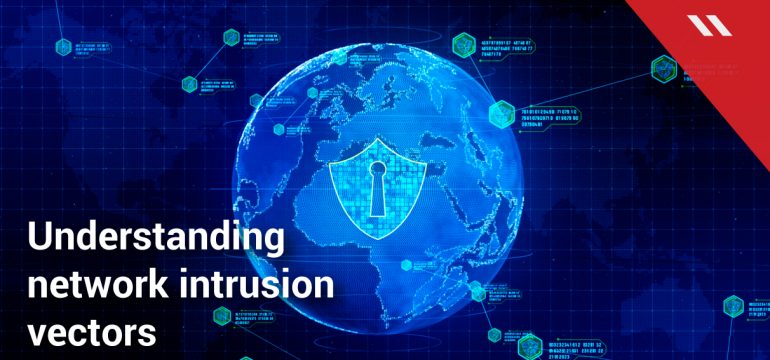Network performance is the key indicator of an enterprise’s productivity and health in these connected times. It is the prerequisite of every business enterprise to maintain a smooth network workflow; however, that is easier said than done. Enterprise networks are susceptible to unauthorized activities in the form of targeted intrusions through vulnerabilities and backdoors.
When such vulnerabilities are exploited, unsolicited access to the network occurs which can have a range of unpleasant consequences for businesses. These intrusions can have harmful effects on business health such as high utilization of resources to loss of enterprise data.
Cybersecurity teams deployed by enterprises are required to proactively detect and respond to network intrusions. It is imperative that these teams have a detailed understanding of how network intrusions and other types of attacks occur so that detection and prevention systems can be set up with the same in mind.
This understanding begins with identifying the type of attack vector. Network intrusions happen through a variety of techniques some of which are –
Asymmetric Routing
In this type of method, intrusions happen via various routes to the target device. To avoid detection, the intrusive packets bypass sensors to reach their target.
Taking advantage of vulnerabilities in networks
In many cases, networks are infiltrated through existing software with attackers either taking advantage of vulnerabilities or using stolen credentials. Since most enterprises use operating systems or other software, attacks can use these vectors for infiltration.
Common Gateway Interface (CGI) scripts
Infiltrators can use the Common Gateway Interface (CGI) scripts to secure network files. CGI scripts are used in networks to support connections between servers and clients on the Web but attackers can manipulate scripts without input verification to access files not meant for the Web.
Protocol Specific Attacks
Devices using common network protocols like TCP, ARP, IP, UDP, ICMP etc. can leave backdoors open for intrusions, e.g. man-in-the-middle attacks
Network intrusions can commonly be covered up by their controllers to ensure that enterprises are unable to detect them. Attackers use various techniques such as deleting access logs, encrypting stolen data or installing rootkits to ensure cybersecurity teams are unable to detect their activities.
The most effective way for enterprises to prevent and act against network intrusions is to employ an Intrusion Prevention/Detection System. An Intrusion Detection System (IDS) monitors all incoming and outgoing network activity and identifies any signs of intrusion in systems that could jeopardize the business. An Intrusion Prevention System (IPS) is a step ahead of IDS with its capabilities. The system detects and blocks anomalies on a company’s network. An IPS is an active control mechanism that monitors the network traffic flow. It identifies and averts vulnerability exploits in the form of malicious inputs that intruders use to interrupt and gain control of an application or system
Benefits of Seqrite’s UTM solution
Seqrite’s Unified Threat Management (UTM) offers a one-stop solution for all enterprise security needs which includes intrusion detection and prevention as a standard feature.
UTM’s in-built IDS and IPS components keep enterprises safe by:
- Monitoring, evaluating and catching threats in real-time
- Preventing Denial of Service (DoS)/Distributed Denial of Service (DDoS) attacks
- Preventing the discovery of open ports by attackers
Seqrite UTM’s IPS acts as a security barrier against unwanted intrusions into enterprise networks and forestalls a broad range of DoS and DDoS attacks before they penetrate the network.




